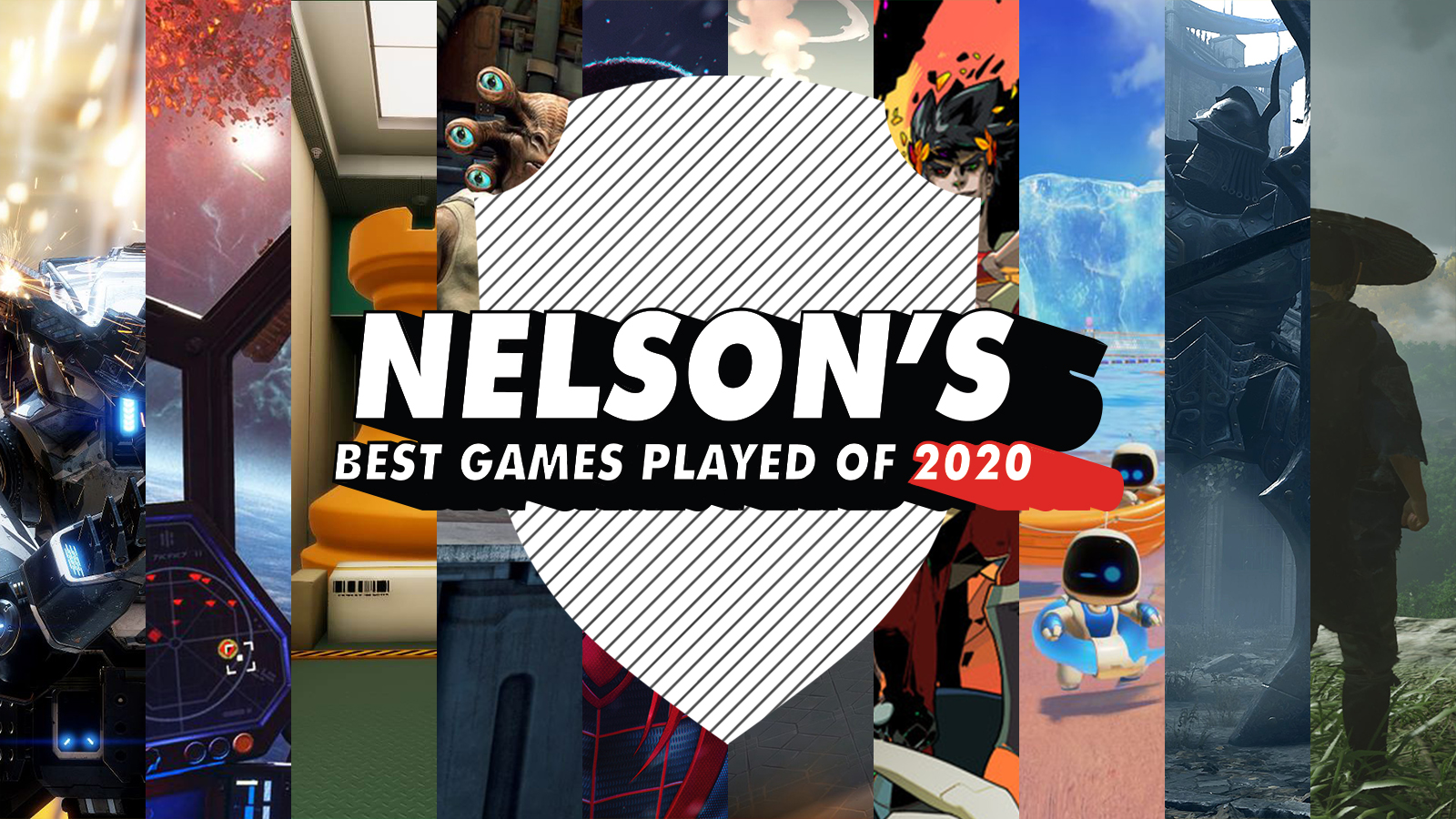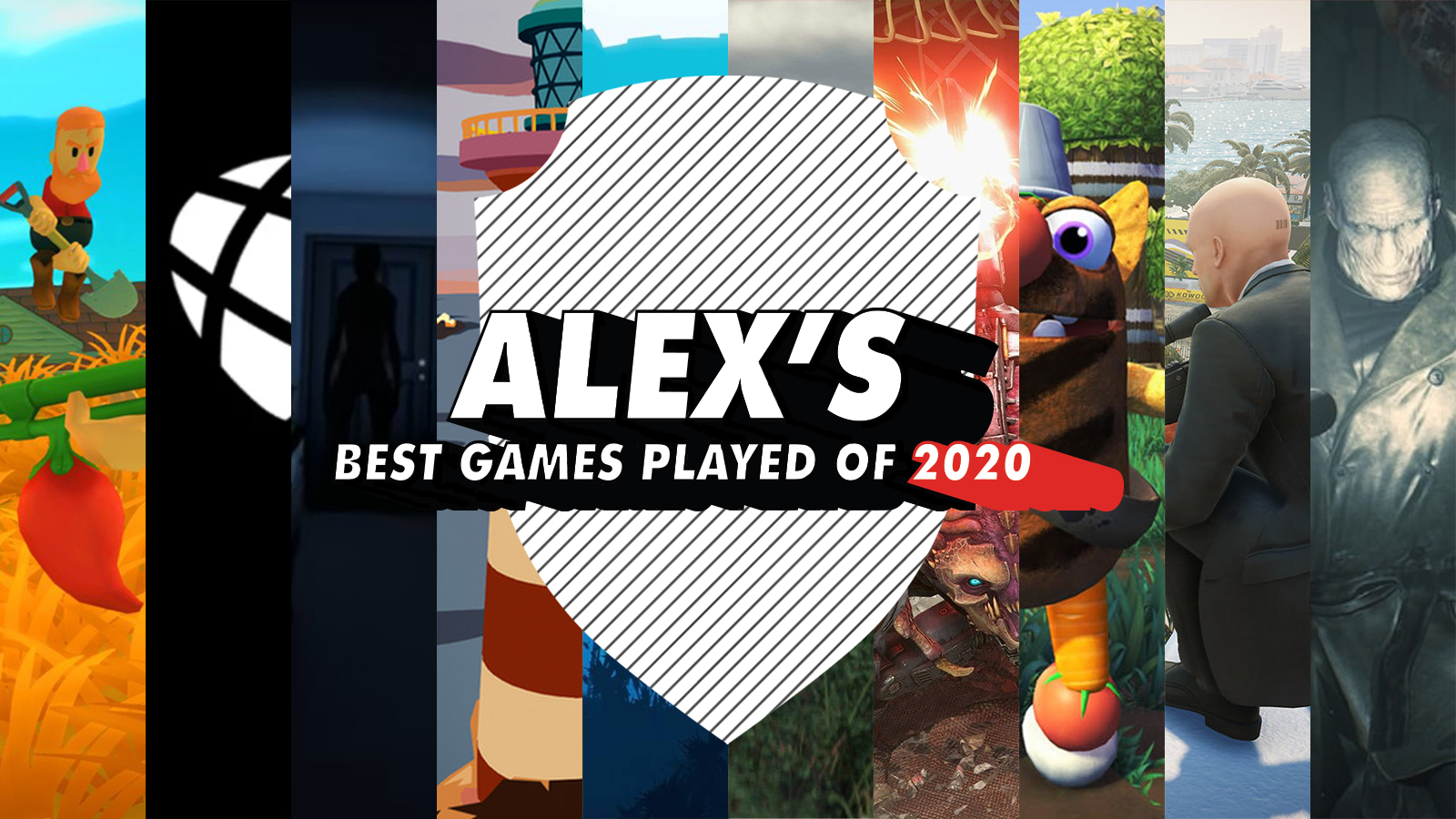020 properly tested my patience with games. We dealt with more battle royales than I can shake a stick at, more paid cosmetics that I actually want, and getting let down by two of the games I was most excited to get my hands on. There was a lot to balk at. Thank god there were just as many games worth celebrating.
From the surprise hit Hades to massive budget titles like Ghost of Tsushima, we have so many games and types of games to play. I’ve become more and more impressed in the way that new titles are able to carve out their space in the market. Maybe they do one or two things a little differently or they really focus their game around one core pillar, building a beautiful experience either way.
Here are the ten games that brought me the most joy over the year known informally as Lockdown 2020.
Titanfall 2
Legendary before ‘Legends.’

While Respawn Entertainment has been busy with Jedi: Fallen Order and Apex Legends, it is extremely worth mentioning how they got to this point. This now-legendary FPS studio created the original Titanfall, a new multiplayer-only franchise, and it does… not great. But they came back swinging.
Titanfall 2 seals up the massive single-player-sized hole left by the first game with a full-blown campaign that makes good on the promise of a Luke and R2-D2 dynamic between a man and his mech, while improving on what was already killer: the speed and momentum of the movement, the snappiness of the gunplay, the feeling of genuine awe when your Titan lands on your location and places you in its cockpit, prepared to do battle.
Trust me, I know it sounds a little straight-forward and cheesy, but you honestly have to try it out for yourself. Something about the combination of gameplay elements is so interesting and downright good that it has myself and thousands more still playing to this day. Plus, it’s nice to harken back to the days when the Mozambique was still a good gun.
Astro's Playroom
Proof that tech demos could, and should, be so much more.

Nintendo undoubtedly reigns supreme when it comes to gimmicky hardware that makes you go, “oh that’s cool,” but Sony is really gunning for the gimmick throne with Astro’s Playroom. Essentially a built-in tech demo and showcase for the PlayStation 5, you control one of many bots that live inside your PlayStation.
While I could talk about how cute all of this is — very, please ask me to talk more about this — the most important thing about Astro’s Playroom is how it uses the DualSense controller’s internal tech. The extremely advanced haptic feedback makes walking on wood, metal, sand, and grass all feel unique. The adaptive resistance on the triggers comes into play to teach you when to be more delicate or when to truly commit. Sony wants you to know they put a lot of money into making the “experience” of playing this console a unique one, and I’m surprised at how well it paid off.
Were some of these controller actions gimmicky or awkward? Maybe. But I was able to more naturally interact with these moments because it was in a controller I already felt comfortable with, and it was in a full-game context. No new console-wide gimmick, just a well-crafted piece of machinery with wildly immersive cherries on top. I am excited to see what this team could do with a full-scale title.
Marvel's Spider-Man: Miles Morales
Gotta be you.

Spider-Man stories have always been best when they’re about the person under the mask. Insomniac proved that with the first, Peter Parker-focused game. Here, the studio doubled down on that focus with Miles Morales, New York’s new Spider-Man.
The roughness and newness of this mantle isn’t lost on Miles, as animations are a little more wild and flailing, the suit is loose and ill-fitting, and Miles is constantly comparing himself to Peter. As the story progresses and the player gains a mastery over Miles’s movements, those comparisons fade away. Those feelings of “this is someone else” is readily replaced by “man, Spider-Man is still dope as hell.”
If you’ve played the original, you know what to expect here. Swing, thwip, punch, it’s all here. It’s the fact that this combines all of those things so well and feels so distinctly its own game is what adds up to make this one so special. So many stories pitch Peter Parker as being the “anyone” that could wear the mask. I love that this one focuses so much on the fact that you have the mask now. Be yourself.
Ghost of Tsushima
Sharp blades, dark shadows, flowing wind.

2020 is the year I discovered I actively dislike open-world games — just despise them. In talking with a friend, we came across the opinion that most open-world games just don’t respect players’ time. A map filled with icons, none of which representing any true hierarchy, and then constant glancing up to the mini-map. This problem is as evident in the PS2 Grand Theft Auto trilogy as it is in Cyberpunk 2077.
If you feel how I feel, do yourself a favor and try Ghost of Tsushima. So many of the mechanics that you’d expect in an open-world game have been streamlined or simplified in such a way that it gets you straight into the action. You’ll never need to peek over at the mini-map because the wind is your guide and everything in the world is affected by the wind. Just look around if you aren’t sure where to go.
This kind of streamlining of mechanics applies to everything, with traversal being the biggest example. You stick to the walls and ropes that you are trying to climb on. Any movement above eye level doesn’t register to enemies searching for you. Light, wind, and environmental elements lead your path. On paper, none of this seems revolutionary, but when you actually get your hands on it, you can see what the sum of these ideas is greater than the parts. It truly makes me wonder, “Hey, why aren’t more games like this?”
Star Wars: Squadrons
"Red Five, standing by."

Squadrons isn’t perfect. I’m aware of that. It’s not the absolute greatest game out there and it might not even be the best dogfighting game. But gotdamn, the attention to detail and the ability to create what I can only describe as “an obvious passion project” deserves to be applauded from here to the Outer Rim.
If you know me, you know I’m a massive mark for pretty much anything (good) that is Star Wars. While I never got to try out the X-Wing and Tie Fighter series, I’ve always been intrigued by the idea of a game where you do more than just shoot at other blips that fly by. Enter Squadrons.
Squadrons replicates the intensity or chase that exists in a variety of games like Forza, TEKKEN, or Halo. That feeling of getting someone in your sights, watching them evade your missiles, only to cut your engines and commit to a hard turn, before committing a barrage of lasers on your quarry… oooooh, that’s good.
That’s a feeling that’s hard to describe. It’s even harder to describe when you look around and realize you are sitting in a perfect replication of an X-Wing or a Tie Fighter. It becomes ten times harder to describe when you pop on a VR headset and go to town. Without any hyperbole, if you are all interested in the idea of flying around in a Star Wars starfighter, this is the killer VR app you’ve been looking for.
Star Wars: Tales from the Galaxy's Edge
Immersive storytelling meets Disney Parks.

I’m a little salty about this one. On my upcoming 30th birthday, I was planning to visit the Disney World Star Wars exhibit. COVID-19 had other thoughts. The ILMxLAB team had very different thoughts.
Set in a virtual version of the Disney World park, you split your time between space pirate shootouts and exploring the area, looking to help set up the Black Spire Outpost (again, a real, physical thing you can go to). Similar to Squadrons, it just feels good to inhabit the Star Wars galaxy in a solid story.
If this were just another random VR game, I would be the first one to tell you that. However, there is a moment that totally made me understand the immersion of VR. Walking into a room, I see Jedi Grand Master Yoda sitting down, back to me. My character calls out his name and he just pats on the ground next to him, inviting you to sit. Sitting down next to Yoda made the immersive aspects of VR just… make sense to me.
Superliminal
An interactive trick of the eye.

There’s just… look, there’s no way for me to tell you anything about Superliminal that would make sense without seeing what I’m talking about. Here is the closest attempt at what one of these puzzles is like.
You walk into a room. There is a huge weight-activated button on the ground. There is also a weird looking decal on the ground. You adjust your perspective so that the weird decal is properly aligned, forming a chess piece. Pop. This chess piece is now interactable. You move closer to the small chess piece so that it takes up a large portion of your screen. When you pick up the chess piece, it is now massive and easily activates the pressure plate.
Follow? Yeah, it’s a little tricky to explain with just words. Look up a video and then get back to me. We’ll gush.
Demon's Souls
Parry. Riposte. Celebrate. Die. Repeat.

The soulsborne genre has almost always been an elusive to me. I’ve played some of the games “inspired by Dark Souls” games — Fallen Order, The Surge, Lords of the Fallen — but never went back to the source. Ho-lee hell, I get it now.
The challenge. The studying and recognition of patterns. The consideration that goes into what weapons you’ll use based on what enemy and what environment aaaaaand there it is. There’s the moment it all clicks.
This is what every attempt at a parry and riposte has been leading up to. The moment where the surround sound closes in, the DualSense speaker pipes up, and the haptic solidifies the way your blade sticks in the enemy. All of that is why we play these games: for the moment you masterfully dispatch an enemy. That feeling is why it was such a great idea for Sony and Bluepoint to remaster this game. That feeling persists. Even after hundreds of times, each win is still celebration-worthy.
Valorant
“You want me serious? You got it.”

There’s less than 30 seconds left to defuse the bomb. Three enemies are left, and only you and one of your teammates are still standing. Approaching the bomb site, you two split up. One goes high and around back, one low. Using your supernatural abilities, you distract your enemies or rattle them just enough. They’re scared. Easy pickings. Moving up, you spot one waiting for your teammate. One down. Another rounds the corner looking for their fallen ally. Two down.
You don’t spot the third enemy. Either they’re hiding in wait or they’ve got a better angle on you. No time. You slowly creep forward and start to defuse the bomb. That third enemy makes themselves known. They take aim at you and a thunderous shot echoes through the halls of the battleground. Clutch headshot from your teammate.
That’s Valorant.
That is one round in a ranked first-to-13 match where the intensity of one round is repeated every single time. In that intensity, Valorant also teaches you how to be a better player. There is a math to what weapons you could and should buy per round. Your setup phase feels like laying traps for your enemies, and each combat phase is like a sniper battle. Because everything is so precise, when you die, it’s hard to blame it on anyone but yourself. Sound harsh? It kinda is, but give Valorant a shot for a week or so and see if you don’t end up a better player.
Hades
I know Hell is supposed to be hot, but damn.

Look at it. Listen to it. Every single pixel and sound file is oozing with style. Combat is absurdly snappy. The weight of your attacks is felt on every connection with an opponent. The art direction is phenomenal — oozing — and truly sets up a unique vision of the Olympian gods.
Hades is the kind of game you expect to play for 15 minutes and then two hours pass by with a smile on your face. The combination of music, art, and gameplay creates such a fantastic blend of just… fun. Hades might just be the most fun I’ve had with a game all year.



